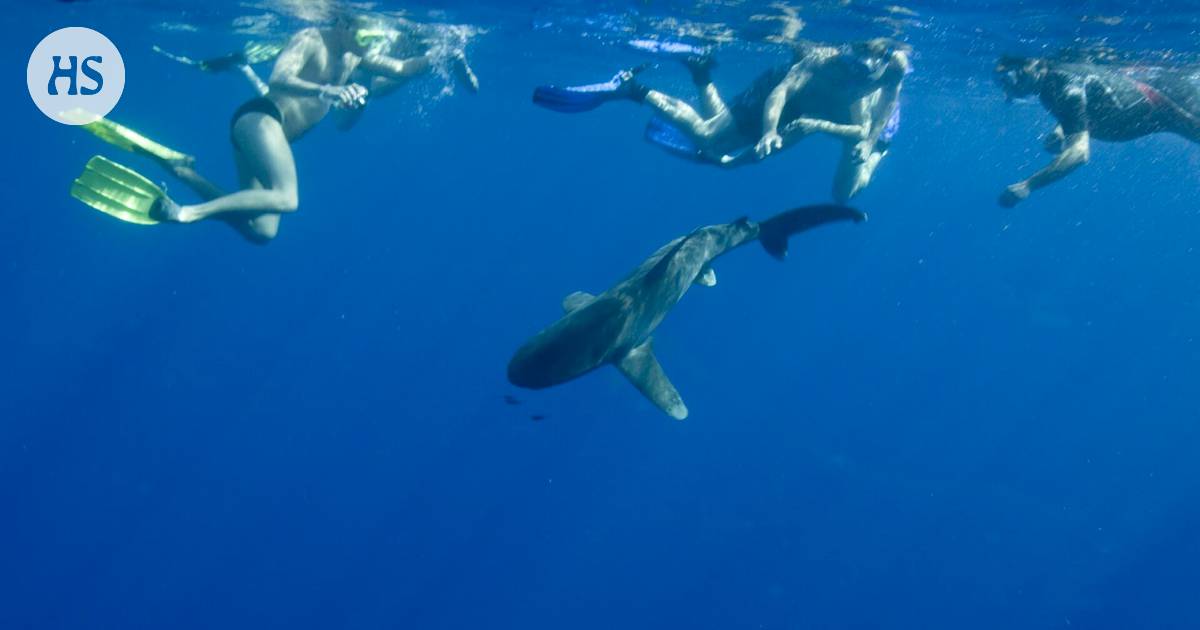Meri|A diver sees sharks constantly, says a marine biologist. A shark killed 10 people last year, while humans killed up to 100 million sharks.
Two killed a sailor in a rare accident at sea, the Spanish Coast Guard said this week. The sailor was hundreds of kilometers from the coast of Gran Canaria when the animal attacked.
Are sharks to be feared?
No, says the marine biologist Markus Dernjatin to the unit. “My own experience is that when you see sharks in nature, there is no reason to be afraid.”
Last year, 69 such attacks were recorded where a person did not scare or chase the sharks first, he says Florida Museum of Natural History Report. A total of ten people died. The most attacks were in the United States and Australia.
“If you think about how much people swim, a shark attack is almost a statistical impossibility,” says Dernjatin.
Even then when a shark does strike, it’s usually an accident, he says. They might mistake humans for something more delicious prey.
Some beaches have been set up with nets for sharks. At least they calm people down, but according to Dernjatin, it’s hard to say if they have any other benefit.
Sharks swim in huge numbers in the world’s oceans, although swimmers only notice a fraction of them. Divers, on the other hand, can often see them, says Dernjatin.
He was a public aquarium superintendent for a long time and says that he has been diving in different seas for almost 30 years also as a trainer and guide.
“For example, in the Galapagos Islands, when you go into the water, you can very well predict that in five minutes you will see a good-sized shark swimming below. There you understand that they are not looking for people.”
A whitetip shark follows the boat with interest. Nothing other than regular feeding can properly explain the use, marine biologist Markus Dernjatin estimates.
Into the water According to Dernjatin, jumping is not recommended, so be careful because of the sharks.
However, according to him, there are two exceptions to the rule. If sharks are known to be looking for food in, for example, a certain river estuary, you shouldn’t fish there, especially if the water is cloudy.
Another place of danger is harbor basins and other places where waste is thrown from boats into the sea. In them, sharks may get used to being fed and may also bite a person who jumps overboard.
“I myself have been swimming with sharks in such a place,” recalls Dernjatin.
The swimming session in the Red Sea is one of the most memorable encounters, but in retrospect he thinks it was stupid. Later, Dernjatin read that the swimmer died in the shark’s teeth in the same place.
Man instead is undeniably dangerous for sharks.
According to the environmental organization WWF, more than a quarter of the species are endangered, and some population sizes have collapsed.
Some sharks are fished on purpose, and some die in the nets along with other catches. It is estimated that up to one hundred million sharks die because of humans every year.
“That’s a lot of sharks every second,” says Dernjatin.
Dernjatin photographed a spotted bearded shark relaxing on the bottom during a dive in West Papua in 2014. In situations where the shark in question has been known to bite, a person has tried to grab it, come very close, or accidentally stepped on it.
Whitetip reef sharks rest during low tide in the Galapagos Islands.
